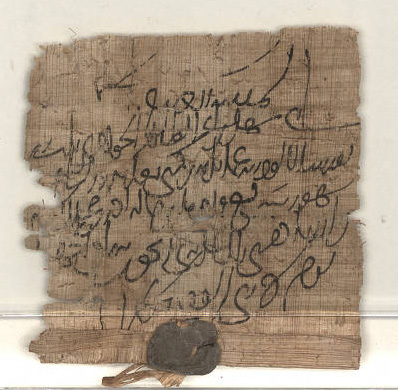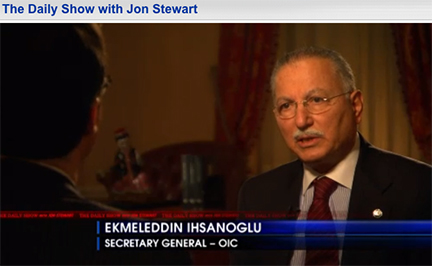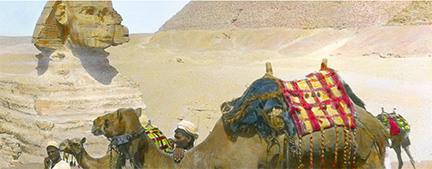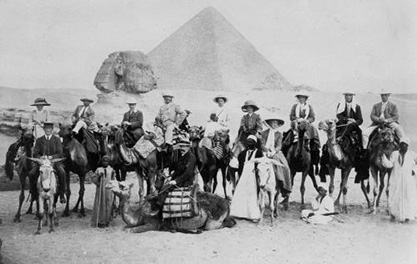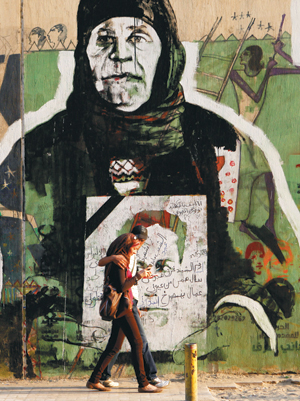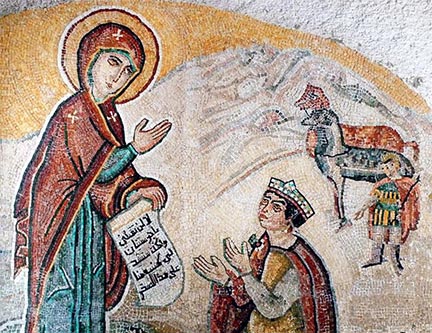
Mosaic depiction of Mary holding an Arabic text, Convent of Our Lady, Greek Orthodox Church, Sednaya, Syria.
by Anouar Majid, Tingis Redux, April 14, 2013
Recently, Tawadros II, the Coptic pope of Egypt, said that “even during the darkest ages†of its history, his church was never subjected to the violence it is now suffering at the hands of Sunni Muslims. Maybe. But what is well known is that the fate of Egyptian Christianity and that of all Christians who found themselves under Muslim domination beginning in the 7th century when Islam emerged as a new religion hasn’t been an easy one.
It is true that the Koran periodically adopts a conciliatory attitude toward the “People of the Book,†but Islam is, in the end, categorically clear about who is right and who is wrong. Not only does Allah reject any religion that is not Islam, but the Koran also commands Muslims to “fight those among the ‘People of the Book’ who do not believe in Allah and the Last Day, who do not forbid what Allah and his messengers have forbidden and do not profess the true religion, till they pay the poll-tax (jizyah) out of hand and submissively.†The Christians’ off-and-on persecution has been a constant fact of life under Islamic rule; in fact, the notion of “genocide†was first inspired by the atrocities that befell Iraqi Christians in the 1920s, which came on the heels of the Turkish massacres of Armenians. As I am writing this, the Copts–a corruption of the word Aigyptos, whose original language goes back to the age of pyramids and which helped decipher the hieroglyphics in the 19th century—who make up some 10 percent of Egypt’s population of 90 million, are the only community of Christians left in any meaningful numbers. And, quite frankly, if Egypt doesn’t change, I wouldn’t bet on their long-term survival. Continue reading The Vanishing Christians of Islam


